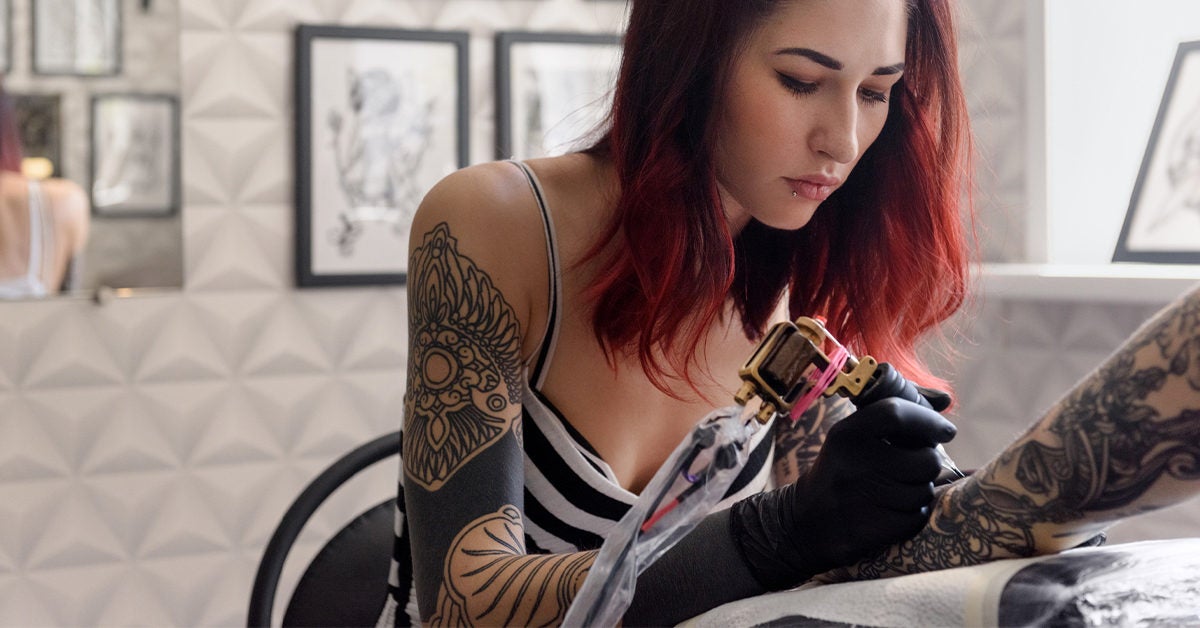The harsh truth about most tattooing sessions is that they are often painful. When the needle is penetrating your skin layer almost 100- 1000 times in a minute, it’s no surprise that you are not going to be at ease during the course of the session.
In fact, this is one factor that tends to put off people – even if initially they wanted to do ahead with the process. A lot of people ask about the degree of pain that is experienced during the tattooing process. It’s understandable and something which even those, despite having several tattoos on their body, worry about prior to their next ink-session. Here, the use of Tattoo Ointments and Numb spray for tattoos have been proven extremely helpful.
However, the pain which results in most tattooing sessions is somewhat manageable and temporary. They only exist until the session of the session, and in the majority of cases, the pain slowly diminishes once the inked area gets healed, and all tattoo aftercare instructions are followed to the letter. Calf tattoo aftercare is especially important. Fully understanding all the tattoo aftercare instructions is critical!
Table of Contents
Now Focussing On Calf Tattoos & Its Pain…
The calf area is a very fresh part of the human body. The skin here is thick, thus providing ample cushion for the muscles and bones. So, naturally, the tattooing process will cause less pain in comparison to some of the other body parts – one such being your ankles, ribs, or knuckles!
Also, the calf region is not that challenging to tattoo on. The surface is rather firm, and with ample thick-skinned cushioning, the needle works its way over it without causing excessive pain, irritation, or discomfort.
Speaking Of Its Pain…
The prime source of worry in the calf region is the tibial nerve. Other than this, there aren’t that many nerve endings existing in the calf area. Not to forget, the fat layer between the skin and muscles helps safeguard the nerve endings, thus making the inking process pretty straightforward from start to finish.
However, the one thing which you should consider about is the part of the calf you will tattoo on. If you opt for a smaller tat design on the thick calf region, then the process will be done quickly and somewhat painlessly. Tattoo ointments are a critical part of the skin recovery process. Is tattoo ointment really necessary? Learn the facts!
Contrarily, if you opt for a larger tattoo design that descends towards the Achilles heals or shin, the levels of pain and discomfort will gradually increase. The reason for that being, as you descend towards the heels and shin, there will be more nerve endings and far less fat! This will make the body more pain-sensitive!
(That Said…) The Healing Process is Relatively Easier for Calf Tattoos…
As stated before, the pain experienced when tattooing your calf area will be only during the process. And the healing process using Tattoo Aftercare cream which follows will be relatively easier. During the healing stage, you can conceal the inked calf area with a loose under the fabric. At best, the pain experienced after the process will last for a hand full of days (at max a week) before it starts to deteriorate. When is a tattoo fully healed?
Speaking of the colder months, calf tattoos can heal quicker simply because you don’t have to fiddle with the under pants, unlike the summer season, where you have to be particularly mindful of the sun and resulting sweat!
So, the bottom line being; inked calf areas tend to get better and quicker during the fall and spring seasons.
How Should You Prepare For Your 1st Calf Tattoo Experience?
- Look to stay hydrated by drinking plenty of water. This will allow your body to function properly and also keep the skin healthy. That said, don’t consume too much caffeine and energy drinks as it could result in more bleeding during the process. Use of Tattoo Sunscreen will also help.
- Look to shave off the calf area that you want to tattoo. Use a hair remover cream or a trimmer to remove long, thick hair strays that could potentially obstruct the needle. It is true that you can ask your tattoo expert to do it for you before the inking starts; the preferable thing to do is shaving it off properly yourself before your session.
- Since tattooing tools don’t like any obstacles when inking your calfskin, you should look to ensure your skin is clean and properly exfoliated on the morning of your session. Look to remove any existing dirt. Doing so will make the task easier for your chosen artist.
- Also, refrain from using any of your regular morning skincare products on the day of your appointment. Just keeping the focussed area hair free and clean should do fine. This will allow the ink to settle on your skin nicely without any imperfections.
- Get a full night’s sleep the night before your appointment. It is fine to be nervous about your 1st ever calf tattooing experience. But going to bed early will help you calm down those nerves and make you ready when the time comes.
- Never show up to your session with a grumbling stomach. Ensure you eaten enough prior to leaving the house. Also, if you sense that the session will be a long one, then bring along some healthy snacks and a water bottle.
- Avoid wearing tight clothes that will make you feel itchy and uncomfortable. Also, if you are tattooing your calf, wear shorts or skirts rather than jeans so that the calf area is easy to access.
- Don’t show feeling intoxicated. Alcohol consumption tends to thin the blood and may cause a problem.
The Price of Calf Tattoos
The cost of tattooing your calf will vary greatly depending on the chosen design, length, and color fillings (if requested).
- For small-medium calf tattoo designs, the cost range will be something around $50 – $200.
- As for larger and more complex designs, the cost range will be something around $300 – $1000.
Surmising
You should consider yourself somewhat fortunate that tattooing the calf area causes the least amount of pain as to other body parts. Still, to mitigate any discomfort, follow the after-care tips suggested by your tattoo artist.
Also, remember to pick one who has a good reputation and an impressive client base in the region. They will have the latest equipment to ensure quality and above satisfying experience.
When all will be said and done, you will be able to enjoy the signs of your beautiful tattoo. And that will eventually make the pain become an aloof memory!





